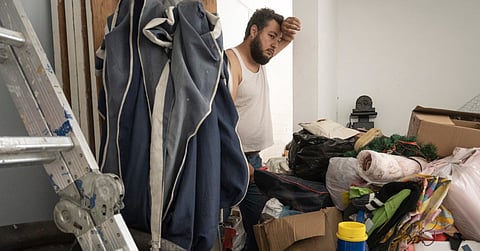
- Home
- About Us
- SOULIVITY TODAY Radio Show!
- COMMUNITY HUB
- GO SHOP by Soulivity!
- ColumnsColumns
- CultureCulture
- Lifestyle
- Contact Us!

Bringing up the topic of a hoarding disorder requires sensitivity and understanding. It’s not just about the clutter but recognizing the emotional ties that your loved one has with their possessions. You must communicate with empathy and patience while providing support that respects feelings and autonomy. Here’s how to approach a loved one with a hoarding disorder.
Begin by exploring why hoarding occurs in the first place. It’s important to realize that hoarding isn’t just about messiness or laziness. People with hoarding disorders often struggle with anxiety, depression, or trauma, which manifests as an inability to part with possessions.
Once you understand the root cause, you can approach the hoarding situation with more compassion and less judgment. Empathizing with your loved one’s struggle is necessary for opening a dialogue that feels safe for them.
Make them feel comfortable talking about their behavior when approaching your loved one about hoarding. Start by expressing your concern without making accusations or demands. You might say something like, “I’ve noticed it’s hard for you to part with things, and I’m here to help.”
Encouraging open conversations about their feelings and struggles sets the stage for healing. Make sure they know they’re not alone; emphasize that you want to support them.
Make them feel comfortable talking about their behavior when approaching your loved one about hoarding. Start by expressing your concern without making accusations or demands. You might say something like, “I’ve noticed it’s hard for you to part with things, and I’m here to help.”
Encouraging open conversations about their feelings and struggles sets the stage for healing. Make sure they know they’re not alone; emphasize that you want to support them.
One of the signs that your loved one may have a hoarding problem is a deep emotional attachment to their belongings. They might keep items for sentimental reasons or out of fear that they’ll need them in the future.
Acknowledge this attachment without trivializing their reasons for holding onto things. By showing understanding, you can gently guide your loved one toward considering why they feel so connected to their possessions and how it’s impacting their life.
Helping a loved one with a hoarding disorder often requires more than just family support. Encourage them to seek professional help, such as therapy or counseling, where they can explore their underlying issues with a trained expert.
Present it as an empowering step toward improving their well-being rather than something to feel shame about. Offering to help your loved one find the right resources can make the process less daunting and show your commitment to their improvement.
Change takes time, especially with a hoarding disorder. Patience is important, as is celebrating small victories along the way. You should acknowledge minor decluttering efforts as progress.
Remind your loved one that recovery isn’t linear, and setbacks are normal. Encouraging their efforts and recognizing each step forward fosters a positive environment that motivates continued progress.
Addressing hoarding requires sensitivity, understanding, and persistent effort. By approaching the issue with compassion and patience, you help create a supportive environment conducive to change. Understand your loved one’s perspective, gently encourage them to seek help, and celebrate progress together. This empathetic approach can strengthen bonds and support their path to recovery.
